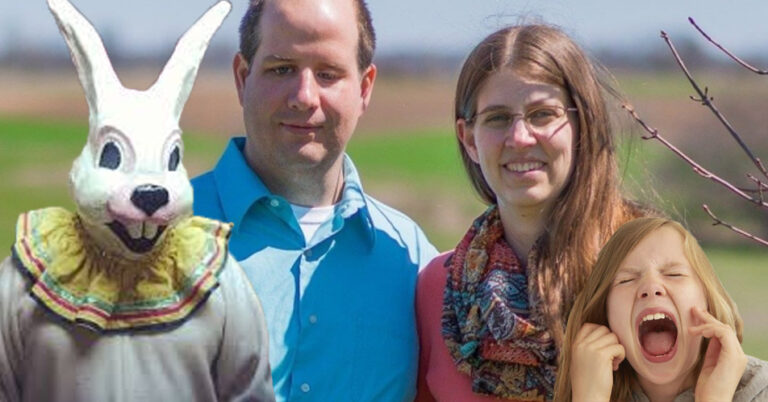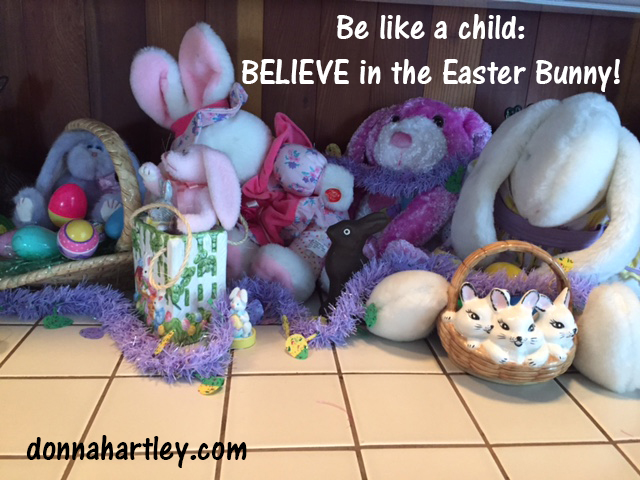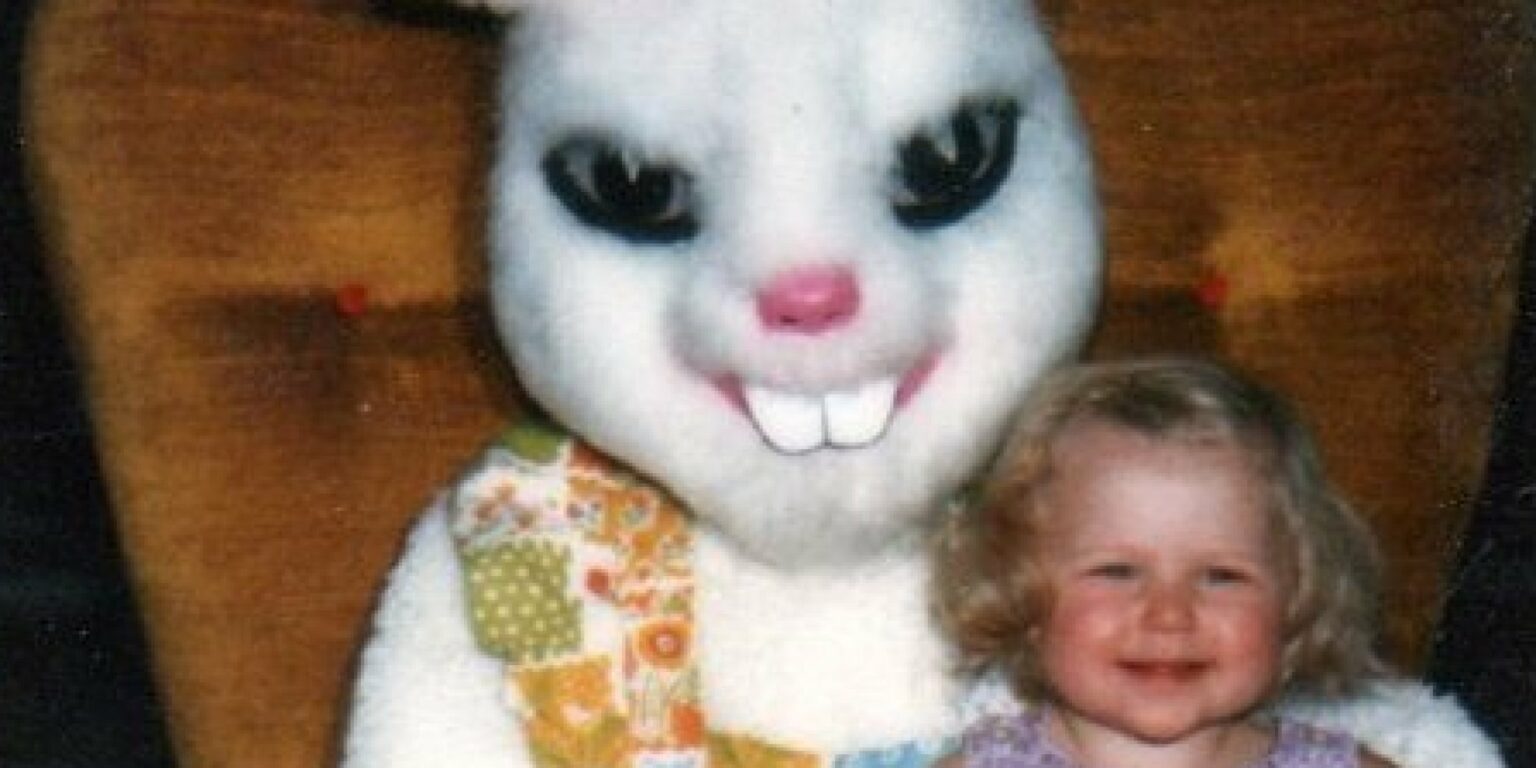Are you wondering when your child will stop believing in the Easter Bunny or Santa Claus? Or maybe you’re struggling with how to break the news that these beloved holiday figures aren’t actually real. It’s a delicate balance between wanting your child to experience the magic of childhood and helping them navigate the reality of the world. In this blog post, we’ll explore the age at which kids typically stop believing in the Easter Bunny and Santa, as well as tips for how to handle the inevitable question: “Is the Easter Bunny/Santa Claus real?” So, let’s dive in and find out when and how to have this conversation with your child.

At what point do children stop believing in the Easter Bunny?
As children grow up, they start developing their own intellectual abilities and thoughts. Their cognitive development plays a crucial role in determining when they stop believing in the Easter Bunny. Along with their own abilities, their siblings, relatives, and friends might also contribute to their realization that the Easter Bunny is not real. The likelihood of them figuring it out on their own increases as they approach the age of 8 or 10 years old.
It is common for children to want to believe in the magical world of the Easter Bunny, where bunnies deliver baskets of treats and eggs overnight. However, as they grow older and become more aware of the world around them, they start questioning the plausibility of the story. As parents, it is important to understand this process and not force your child to continue believing in something that they have outgrown.
It is important to note that some children may continue to believe in the Easter Bunny until a later age, and that’s okay too. Every child is different, and they should be allowed to follow their own path of development. As a parent or caregiver, it is important to be honest with your child when they start asking questions about the Easter Bunny. It is better to have an open and honest conversation than to let them find out the truth on their own or through peers, which can potentially cause hurt or confusion.
>> Must read Will there be a 4th Santa Clause movie?
Navigating the Conversation: Explaining the Truth about the Easter Bunny to Children
When it comes to telling kids that the Easter Bunny isn’t real, it can be a tricky situation for parents. However, it’s important to have an honest conversation with your child to avoid any confusion or disappointment in the future.
A helpful way to approach the topic is to acknowledge that the Easter Bunny is similar to other imaginary creatures that children may have believed in before, like the Tooth Fairy or Santa Claus. You can say something like, “The Easter Bunny is a lot like other things you know aren’t real, but used to believe in — like the monster under the bed.”
It’s important to reassure your child that this conversation doesn’t mean that your family’s Easter traditions will change. For example, the Easter baskets and egg hunts will still happen. Encourage your child to participate in these traditions, and suggest new ways to celebrate Easter. Maybe your child can take on a new role in the Easter celebration, such as helping to prepare the meal or hiding the eggs for younger siblings.
Overall, telling your child that the Easter Bunny isn’t real can be a difficult conversation, but it’s essential to be honest and open with your child. By continuing to celebrate Easter traditions and finding new ways to celebrate, you can help your child transition from believing in the Easter Bunny to enjoying the holiday in a new way.
Trending now – Is Goosebumps inappropriate?
Navigating the “Easter Bunny isn’t real” conversation with your kids.
As children grow up, it becomes inevitable for parents to address the reality of their beloved childhood fables. The Easter Bunny is no exception. According to experts, fables like the Easter Bunny aid in the development of a child’s imagination. However, parents should consider their child’s age before revealing the truth. Children over the age of five should be gradually exposed to the reality behind the myth. It is important to approach the topic with sensitivity and honesty, allowing the child to process the information at their own pace. By doing so, parents can avoid shattering their child’s trust and maintain a healthy relationship built on trust and honesty.

The Age at which Children Stop Believing in Santa Claus.
Many children around the world look forward to Christmas and the magical figure of Santa Claus. According to a study conducted in 1978, a vast majority of young American children, around 85 percent, believe in Santa. Surprisingly, researchers today confirm that the numbers are still virtually the same, with many children believing in the magical figure until about the age of eight.
For many children, the belief in Santa Claus is a major part of their childhood, and it is often a joyous and exciting experience. As they grow older, children begin to question the existence of Santa, and the magic and mystery surrounding the famous figure begin to fade away. However, it is crucial to note that every child is different, and the age at which they stop believing in Santa may vary.
It is important for parents to handle the situation with care and sensitivity when their child begins to question the existence of Santa. Parents should encourage their child to think critically and come to their conclusion about Santa’s existence. It is essential to be honest with children and explain the truth about Santa in a way that they can understand.
In conclusion, while the age at which children stop believing in Santa may vary, the belief in the magical figure is an essential part of many children’s childhood. As parents, it is crucial to handle the situation with care and sensitivity, ensuring that their child’s transition from believing in Santa is a smooth and positive experience.
At What Age Do Children Start Wondering About Santa Claus?

It’s a common question among parents: at what age do kids ask about Santa Claus? While every child is unique and may come to their own conclusions at different ages, statistics show that the average age that kids in the United States stop believing in Santa Claus is around 8.5 years old. This means that it’s likely that your child will begin to ask questions about the validity of Santa Claus around this age.
As a parent, it’s important to be prepared for these questions and to decide when the right time is to have an honest conversation with your child about the truth behind Santa Claus. While it can be difficult to let go of the magic and wonder that comes with believing in Santa Claus, it’s important for children to eventually learn the truth and to understand the spirit of giving that the holiday season represents.
Remember that every child is different and may come to their own conclusions at different ages. It’s important to be sensitive to your child’s feelings and to approach the conversation in a way that is appropriate for their age and maturity level. Whether your child asks about Santa Claus at age 6 or age 10, it’s important to be honest and open with them in a way that helps them to understand the true meaning of the holiday season.
The Truth Behind the Elf on the Shelf: Is It a Real Tradition or Just Your Parents’ Trick?
The Elf on the Shelf has become a popular Christmas tradition in many households, with parents placing the elf in different locations each night to create the illusion that it is moving on its own. This can lead children to believe that the elf is real, and many parents may struggle with how to explain its true origins. While the elf itself is a real doll, it is important to be honest with children about who is responsible for moving it each night.
Some parents may worry that revealing the truth will ruin the magic of the holiday season, but it is important to remember that children can still enjoy the tradition even if they know the truth. In fact, being honest with children can help to build trust and strengthen the parent-child relationship.
It is also worth noting that the Elf on the Shelf is not a necessary part of the holiday season, and families can choose to participate in the tradition or not. Ultimately, the decision about whether or not to tell children the truth about the elf is up to each individual family. However, it is important to consider the long-term effects of keeping up a falsehood and whether it is truly worth it for the sake of a temporary holiday tradition.
The Great Dilemma: When to Reveal the Truth About the Easter Bunny to Your 11-Year-Old Child.
As parents, we all want to keep our children in the happy and magical world of childhood for as long as possible, but as they grow up, their curiosity and intelligence start to develop, and they may start to question the existence of the Easter Bunny. Some parents may be tempted to keep the myth alive by telling their children the Easter Bunny is real, even when they are well beyond the age where they believe in such things. However, honesty is the best policy when it comes to answering such questions. Whether they are 5 or 11 years old, if your child comes up to you and asks if the Easter Bunny is real, it’s best to be truthful.
When children start to question the Easter Bunny’s existence, it’s a sign that they are growing up and becoming more aware of the world around them. Answering honestly and openly can help develop trust and respect between parents and children. It’s important to remember that it’s okay for children to outgrow certain beliefs and traditions. As parents, our job is to guide them through this transition and help them understand that the magic of Easter can still be celebrated, even when they know the truth about the Easter Bunny.
It’s understandable that parents may be hesitant to tell their children the truth, as they worry about shattering their child’s innocence and ruining their childhood memories. However, it’s better to be honest with them than to continue the charade. If you do decide to be honest with your child, it’s important to be gentle and reassuring in your approach. Let them know that the magic of Easter is not just about the Easter Bunny, but it’s also about spending time with family and friends, and celebrating the joy of new beginnings.
In conclusion, answering your child’s questions about the Easter Bunny truthfully and openly is the best approach. While it may be tempting to keep the myth alive, it’s important to remember that honesty is the foundation of any strong relationship. By being truthful, you can help your child navigate this transition and appreciate the true meaning of Easter.
At what age do children typically stop believing in the Easter Bunny?
Engaging in the fantasy of Easter Bunny is a fun activity for children of all ages. There is no specific age limit to believe in the Easter Bunny. However, if you think your child is ready to know the truth or if you are curious whether your child already knows about it, there are ways to tell them. It is important to consider that children develop at different rates and their emotional readiness to understand such concepts may vary. Parents should assess their children’s readiness to receive such news before disclosing the truth about the Easter Bunny.
It is advised to approach the topic in a gentle manner, using age-appropriate language and avoiding making fun of their beliefs. It is essential to be honest and truthful while providing comfort and reassurance to your child. You can also explain the history and origins of the Easter Bunny to help them understand the significance of the festival beyond the myth.
Remember, the decision to disclose the truth about Easter Bunny should be based on the individual child’s readiness to understand it. Children may feel confused or disappointed when they find out the truth, but it is an essential part of growing up. In the end, the spirit of Easter and the joy of celebrating with family and friends are what matters the most.
Age Appropriate Easter Activities: When Should Children Stop Hunting for Eggs?
Easter is one of the most celebrated holidays around the world, and it is a time when families come together to enjoy traditions like dyeing Easter eggs and having Easter egg hunts. However, as children grow up, their belief in the Easter Bunny and the magic of the holiday may begin to wane. Many parents wonder if their kids are too old for these traditions, particularly the Easter egg hunt.
The question of whether 12 is too old for an Easter egg hunt is a common one. The answer, however, is simple: no, it’s not too old. Many people believe that there is no age limit to enjoying traditions like the egg hunt. In fact, some argue that it’s never too old to participate in this beloved activity.
While some may argue that by a certain age, children should outgrow the Easter Bunny and egg hunts, the consensus is clear: no one is too old. Even experts agree that traditions like these can bring families together and create lasting memories. In fact, the joy of the egg hunt can be just as strong for adults as it is for children.
In conclusion, if you’re wondering if your child is too old for an Easter egg hunt, the answer is no. No matter what age your child is, they can still enjoy this tradition and create long-lasting memories. So go ahead, hide those eggs and let the fun begin!
At what age do children typically stop believing in Santa Claus?
It is fascinating to learn that a majority of Americans, approximately 67%, stop believing in the existence of Santa Claus by the time they enter seventh grade. This means that most kids start questioning the reality of Santa Claus at an early age. This is backed up by the fact that 49% of Americans reported that they stopped believing in Santa before the age of ten. This number is quite significant, indicating that children are likely to start questioning the existence of Santa Claus in their early years.
It is interesting to note that a quarter of Americans, approximately 23%, reported that they lost sight of Santa Claus between the ages of seven and eight. This is a crucial age range as it coincides with the time when kids are beginning to develop critical thinking skills and are more likely to question things that they have been told without evidence.
It is natural for children to believe in magical beings like Santa Claus, the Easter Bunny, or the Tooth Fairy. However, as they grow older, they start to realize that these characters are not real. Parents should allow their children to believe in these magical beings for as long as they want, but they should also prepare them for the inevitable truth.
In conclusion, it is normal for children to stop believing in Santa Claus at an early age. Parents should not be surprised when their children start questioning the existence of Santa Claus, but they should also not force them to stop believing in him. It is important for parents to have an open and honest conversation with their children about the reality of Santa Claus and other magical beings.
- What is considered the best animated movie of all time?
- What is the Grinch answering machine phone number?
The belief in the Easter Bunny and Santa Claus is a magical part of childhood that eventually comes to an end. While it can be difficult to navigate when and how to tell your child the truth, it’s important to remember that they will likely figure it out on their own as they grow and develop intellectually. Whether it’s through the presence of older siblings or friends who no longer believe, children usually stop believing in the Easter Bunny and Santa Claus by the age of 8 to 12 years old. So, enjoy the magic while it lasts and cherish the memories of Easter egg hunts and Santa visits, but know that the time will come when your child will move on to new experiences and beliefs.



